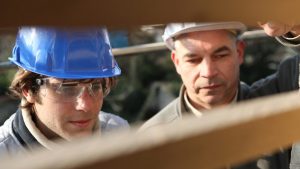Toronto’s George Brown College is looking to the future, ramping up its clean-tech training with the addition of two new offerings in the solar technology sector: solar installation and solar technician programs.
While it won’t be the first institute to offer training in solar technology, the college is taking a novel approach to how the two certificate programs will be taught.
They employ “extensive simulation software” so students can study offsite, testing, troubleshooting and debugging systems and equipment at their own pace, says Colin Simpson, dean of the Centre for Continuous Learning at George Brown College.
“We turn the computer into a fully-functioning PV installation,” he says, noting the software can identify how much power a specific solar array is producing in different weather conditions, helping to teach students optimum efficiencies.
The solar technician curriculum covers electrical requirements such as power tie-ins for solar farms, troubleshooting, debugging PV systems and the practical side of running a business including bidding and completing permits with utility companies.

“We’re using (simulations of real) invertors, batteries and the solar panels so the students get a really unique experience.”
The AI-driven training format uses algorithms to determine areas of weakness or strengths in each student so curriculum can be personalized to meet individual needs, the dean says.
At other colleges and training centres where teaching is done on-campus in group settings, students have less opportunity to work individually on equipment, Simpson says.
At George Brown, students struggling with an issue in one of the learning modules can turn to live tutorial support, offered seven days a week.
“We’re not saying what we do is better, but it is far more convenient. It puts the students in charge of the learning, rather than the institution determining when and where that studying should take place,” he says.
The courses are designed in partnership with industry to ensure skills taught are what are needed in the field, Simpson adds.
While the solar installer program is 16 weeks, the solar technician curriculum is covered in 24 weeks and is geared to people typically wanting careers as solar photovoltaic contractors.
Simpson says both programs are expected to draw even more than other popular clean tech programs offered at the college, including the electrical vehicle program which has more than 700 students from 26 countries.
The offsite teaching approach is much the same in all the clean-tech programs.
“They have been a game-changer for us, integrating simulation software, having really good tutorial support and counting on AI with the curriculum so each person has a personalized learning experience,” he adds.
The solar and wind industries are expected to grow rapidly in the next few years. Simpson says the skilled trades gap is projected to be 85,000 by 2033, if training isn’t ramped up.
“We (training schools) need to do a better job of upscaling and rescaling of our skilled tradespeople and that is part of the reason why we see this other way of teaching the best way forward because we can’t count on our people quitting their jobs and going to school to get new skills.”
Simpson says the college is getting “a huge amount of interest from prospective employers” in graduating students, adding he expects the solar programs could each top enrolment of 1,000 students.
“We can accept as many students as want to sign up with us.”
The college maintains an up-to-date job board and is “constantly in communication” with employers about the types of skills they need, Simpson says, adding many of the jobs are in the west, with Alberta leading in solar installations and technology in Canada.
There is “a huge opportunity” for the solar industry in Ontario and Quebec with growth ranging from large-scale solar farms with thousands of panels to small 10 to 15 panel installs, he adds. In Greater Toronto, he sees a potential demand for roof installations on industrial warehouses.
The two programs follow last year’s introduction of a wind turbine tech program at the college and are the ninth and 10th in its clean-tech program offerings.
The programs adhere to code and regulatory requirements in Canada and around the globe.






Recent Comments